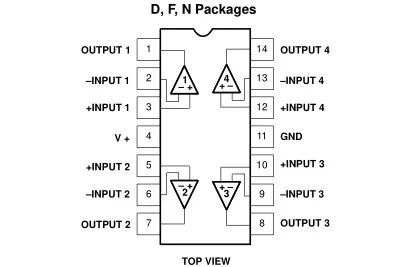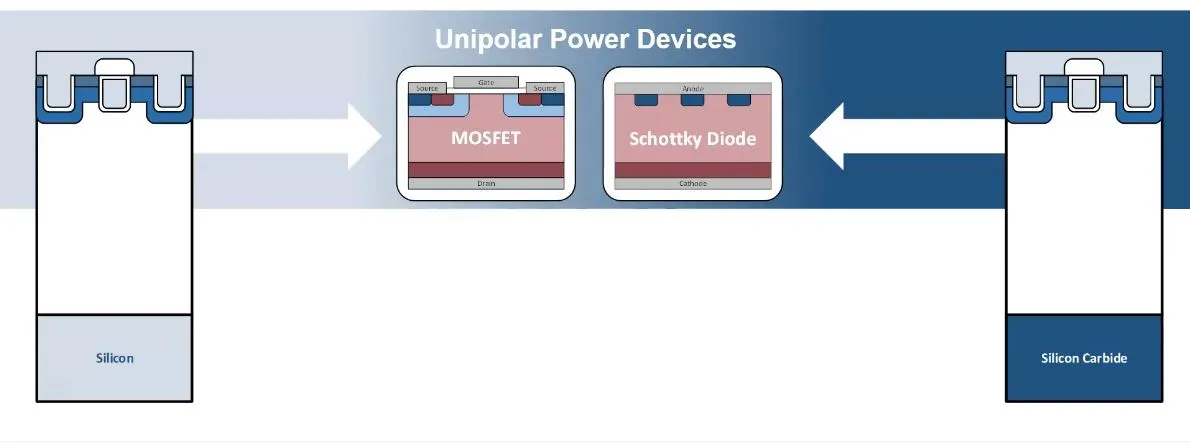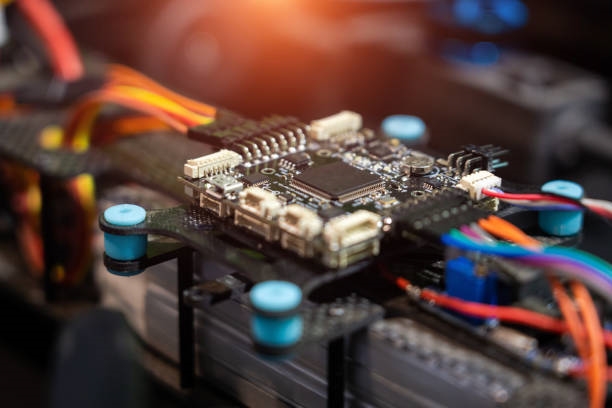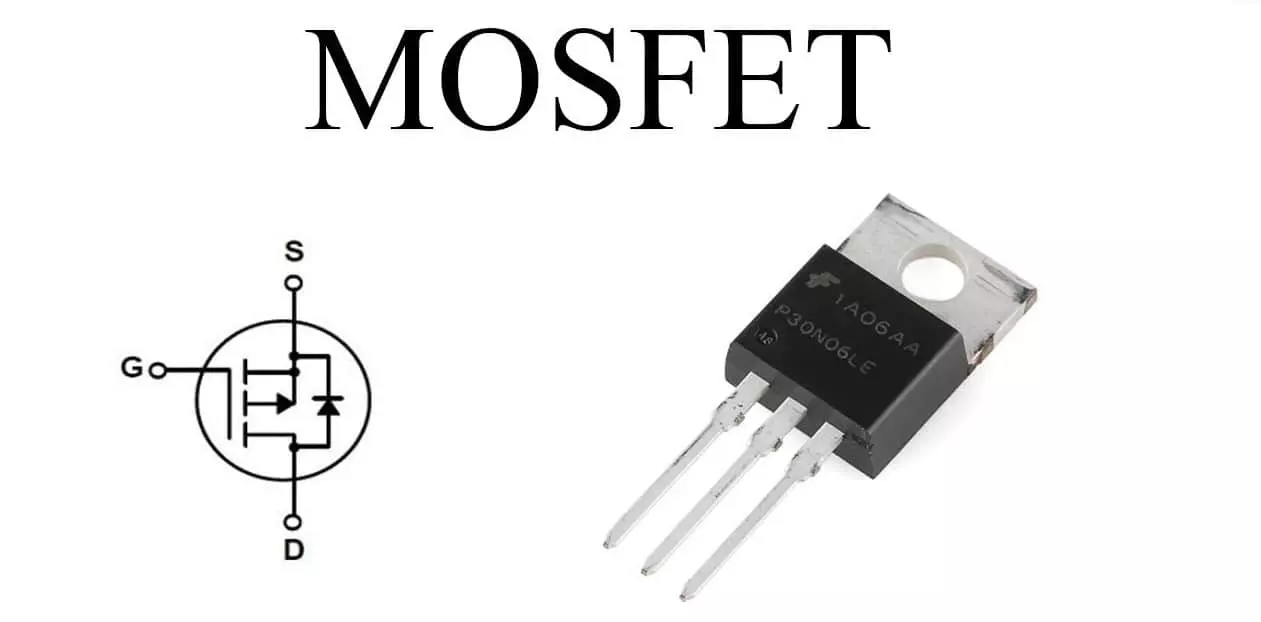
Power MOSFETs have been the most rapidly evolving devices among power semiconductors. In silicon-based devices, SJ (superjunction) MOSFETs and IGBTs have seen deep development in structure and fabrication. SJ MOSFETs use a charge-balance device architecture to reduce on-resistance, which is especially advantageous in high-voltage applications. Meanwhile, wide-bandgap materials such as SiC and GaN are providing alternative device options with switching characteristics closer to ideal for many circuits.
Semiconductor material development pathways . Engineers must trade off performance, cost, manufacturability, size, thermal efficiency, and availability when selecting devices.
SiC MOSFETs
SiC, or silicon carbide, is a compound semiconductor composed of carbon and silicon. It is well suited for high-temperature, high-frequency, high-power, and high-voltage devices. Compared with silicon, SiC has a bandgap roughly three times larger, thermal conductivity about 4–5 times higher, breakdown field strength about 8–10 times greater, and electron saturated drift velocity roughly 2–3 times that of silicon. These properties meet modern requirements for high power, high voltage, and high frequency, so SiC diodes and MOSFETs have begun to see commercial use in applications such as power distribution, electric vehicles, PV and wind systems, and telecommunications.
SJ (Superjunction) MOSFETs
Si MOSFETs are manufactured as planar-gate MOSFETs or superjunction MOSFETs. In planar high-voltage MOSFETs, increasing the blocking voltage requires a thicker drift layer, which raises on-resistance. SJ MOSFETs mitigate this by arranging multiple vertical p-n junctions between drain and source to achieve charge balance, enabling lower on-resistance while retaining high blocking voltage.
SJ MOSFETs offer high voltage capability with low resistance. Compared with conventional high-voltage VDMOS, SJ devices exhibit much lower RDS(ON) and are suitable for fast-switching applications demanding high efficiency and power density. The reduction in on-resistance becomes more pronounced at higher rated voltages, making SJ MOSFETs well suited for high-speed operation at medium to low power levels.
IGBTs
IGBTs, insulated-gate bipolar transistors, are composite, fully controllable voltage-driven power devices that combine features of BJTs and MOSFETs. They provide the high input impedance of MOSFETs and the low conduction drop of bipolar transistors. IGBTs are commonly used for converting high-voltage DC to AC and for variable-frequency drives, which is why they are frequently used in traction and motor drive applications.
Comparison: SiC MOSFET vs Si SJ-MOSFET
1. Static characteristics
When VGS (gate-to-source voltage) exceeds VTH (threshold voltage), the drain current rises rapidly and exhibits a negative temperature coefficient. For SiC MOSFETs, the current increases more gradually after VGS exceeds VTH, indicating a lower transconductance (Gm), and shows positive temperature behavior for VGS below about 10 V.
The RDS(ON) curve of SiC MOSFETs has a U-shape, while SJ MOSFETs show increasing RDS(ON) with rising junction temperature (Tj). This is because the JFET region and drift-region resistance dominate SJ MOSFET behavior. SiC MOSFETs tend to maintain lower conduction losses at high temperature, whereas SJ MOSFETs require closer attention to the RDS(ON) increase and its impact on thermal management.
These observations are derived from datasheet analysis. A full evaluation of device performance requires combining static characteristics, switching behavior, thermal response, and loss distribution within the context of the intended application.
 ALLPCB
ALLPCB





